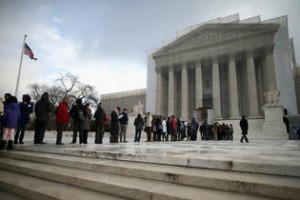Voting Rights, by the Numbers
< < Go Back
When the Supreme Court struck down the heart of the Voting Rights Act in 2013, its main argument was that the law was outdated.
Discrimination against minority voters may have been pervasive in the 1960s when the law was passed, Chief Justice John Roberts Jr. wrote, but “nearly 50 years later, things have changed dramatically.” In this simplistic account, the law was still punishing states and local governments for sins they supposedly stopped committing years ago.
The chief justice’s destructive cure for this was to throw out the formula Congress devised in 1965 that required all or parts of 16 states with long histories of overt racial discrimination in voting, most in the South, to get approval from the federal government for any proposed change to their voting laws. This process, known as preclearance, stopped hundreds of discriminatory new laws from taking effect, and deterred lawmakers from introducing countless more.
But Chief Justice Roberts, writing for a 5-4 majority, invalidated the formula because “today’s statistics tell an entirely different story.”
Well, do they? A comprehensive new study by a historian of the Voting Rights Act provides a fresh trove of empirical evidence to refute that assertion.
It found that from 1957 until 2013, more than 90 percent of these legal “events” occurred in jurisdictions that were required to preclear their voting changes. The study also provides evidence that the number of successful voting-rights suits has gone down in recent years, not because there is less discrimination, but because several Supreme Court decisions have made them harder to win.
Mr. Kousser acknowledges that the law’s formula, created without the benefit of years of data, was a “blunt tool” that focused on voter turnout and clearly discriminatory practices like literacy tests. Still, he says, the statistics show that for almost a half century it “succeeded in accurately homing in on the counties where the vast majority of violations would take place.”
But the Roberts opinion showed no interest in actual data. Nor did it seem to matter that the law was already adapting to current conditions: Every one of the more than 200 jurisdictions that asked to be removed from the preclearance list was successful, because each showed it was not discriminating.
Instead, the court said the coverage formula had to be struck down because it failed to target precisely all areas with voting rights violations in the country.
Mr. Kousser’s study does not solve this problem, in part because there is no easy way to compare discrimination in places that are under a federal microscope with those that are not. But the study provides the most wide-ranging empirical evidence yet that Congress was amply justified in finding that voting discrimination remains concentrated in the covered states and regions. In other words, the tactics may have changed, but the story remains largely the same. Voting discrimination no longer takes the form of literacy tests and poll taxes. Instead, it is embodied in voter-ID laws, the closing of polling places in minority neighborhoods, the elimination of early-voting days and hours, and much more.
More From The New York Times:




